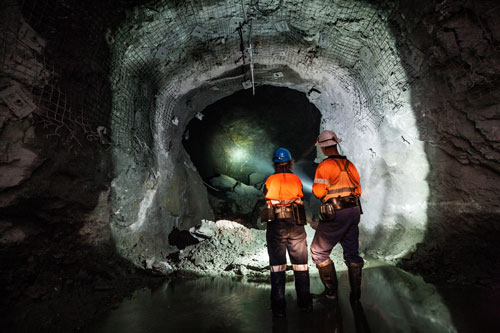Incidents that changed workplace safety laws
Recent editions of The Essentials have explored how legislation is made, but how do Governments decide what needs to be regulated?
Legislation is created in response to many triggers and events, such as Government policies and commitments. In some cases, legislation is developed following a significant local or international incident that highlights the need for additional control measures.
This article explores some examples of incidents that led to changes to Australian and New Zealand workplace safety laws.
QLD industrial manslaughter and amusement devices
In October 2016 two separate workplace incidents occurred which prompted the Queensland Government to commission the Best Practice Review of Workplace Health and Safety Queensland.
The incidents
- A concrete slab fell onto and killed 2 construction workers at a racecourse in Eagle Farm
- 4 people were killed after a theme park ride failed
The recommendations
The Best Practice Review Final Report made many recommendations for improvement, including (among others):
- introduction of new ‘Industrial Manslaughter’ offences under Queensland’s Work Health and Safety Act 2011, Electrical Safety Act 2002 and Safety in Recreational Water Activities Act 2011
- requiring major inspections of amusement devices by competent persons, and
- requiring a safety case to be prepared for operators and facilities whose amusement devices collectively present a high risk.
The changes to legislation
The Queensland Government subsequently proposed and passed:
- legislation changes to create industrial manslaughter offences under the Work Health and Safety Act 2011, Electrical Safety Act 2002 and Safety in Recreational Water Activities Act 2011. The proposed changes became law from 23 October 2017
- legislation changes to mandate major inspections of rides by qualified engineers every ten years, proper inspection, maintenance and related competency records, and a new safety case and licensing system for major amusement parks. The changes commenced from 1 May 2019.
Additional industrial manslaughter offences were later introduced for the resources sector on 1 July 2020 under the Explosives Act 1999, Petroleum and Gas (Production and Safety) Act 2004, Coal Mining Safety and Health Act 1999 and Mining and Quarrying Safety and Health Act 1999.

New Zealand mine safety
The incident
In November 2010, an underground coal mine in the West Coast of New Zealand exploded after a significant volume of methane gas accumulated and ignited, killing 29 people.
Following this, the New Zealand Government established the Royal Commission on the Pike River Coal Mine Tragedy to determine what happened and why, and to identify measures to prevent future incidents.
The recommendations
From the Royal Commission came 16 main recommendations, among which were:
- establishing a Crown agent to focus only on health and safety
- establishing an effective regulatory framework for underground coal mining
- urgently improving emergency management in underground coal mines, and ensuring availability of modern equipment and facilities
- ensuring managers in underground coal mines are appropriately trained in health and safety, and
- improving worker participation in underground coal mine health and safety.
The changes in legislation
The NZ Government agreed to the recommendations, and commenced a programme of actions to implement them.
In December 2013, WorkSafe New Zealand was established as a separate agent to regulate workplace health and safety, the Health and Safety in Employment Act 2013 was amended, and the new Health and Safety in Employment (Mining Operations and Quarrying Operations) Regulations 2013 commenced.
Among other things, the changes to the Act supported a new regulatory regime to be included in the Regulations, and introduced new worker health and safety participation requirements for the mining sector.
The new Regulations:
- primarily set out the new regulatory regime for the management of hazards in the mining industry
- included requirements for emergency management and preparedness in underground mining and tunnelling operations, including emergency equipment, and
- established competency requirements for holders of safety-critical roles in the mining industry.
In addition, New Zealand’s underground mine work health and safety system was further changed in response to the Royal Commission and the Independent Taskforce on Workplace Health and Safety when the Act and Regulations were revoked and replaced by the new Health and Safety at Work Act 2015 and Health and Safety at Work (Mining Operations and Quarrying Operations) Regulations 2016 in April 2016.

Some more examples
For some additional incidents that were followed by the review and improvement of related legislation, please see the following:
The incidents
- Canterbury earthquakes and new system for managing earthquake-prone buildings in New Zealand
- Multiple quad bike fatalities and changed quad bike safety rules from the Federal Government, and in Tasmania
- Deaths from a Victorian brick wall collapse and new offences under the Building Act 1993 for building work without a building permit.
Staying up-to-date
You can stay up-to-date with similar changes to workplace safety legislation across Australia and New Zealand through our SafetyLaw and HSE LawGuides products. Our monthly HSE Bulletin also details fines and prosecutions which have resulted from failure to comply with this legislation.
References
- https://statements.qld.gov.au/statements/82366
- https://statements.qld.gov.au/statements/86741
- https://statements.qld.gov.au/statements/89870
- https://www.worksafe.qld.gov.au/__data/assets/pdf_file/0011/22322/best-practice-review-of-whsq-final-report.pdf
- https://www.worksafe.qld.gov.au/laws-and-compliance/compliance-and-enforcement/penalties/the-industrial-manslaughter-offence-under-queensland-legislation
- https://www.worksafe.qld.gov.au/about/who-we-are/workplace-health-and-safety-queensland/best-practice-review-of-workplace-health-and-safety-queensland
- https://www.worksafe.qld.gov.au/__data/assets/pdf_file/0011/22322/best-practice-review-of-whsq-final-report.pdf
- https://pikeriver.royalcommission.govt.nz/About-the-Commission
- https://pikeriver.royalcommission.govt.nz/Volume-One—Overview
- https://pikeriver.royalcommission.govt.nz/Volume-One—Recommendations
- https://www.mbie.govt.nz/assets/e2ed40d79a/pike-river-implementation-december-2013-update.pdf
- https://www.legislation.govt.nz/bill/government/2013/0130/7.0/DLM5302002.html
- https://www.legislation.govt.nz/bill/government/2013/0182/7.0/DLM5616101.html
- https://www.legislation.govt.nz/bill/government/2014/0192/5.0/DLM5976603.html
- https://canterbury.royalcommission.govt.nz/About-the-Royal-Commission
- https://www.building.govt.nz/managing-buildings/managing-earthquake-prone-buildings/#jumpto-new-system-for-managing-earthquake__002dprone-buildings
- https://www.comcare.gov.au/about/news-events/news/introduction-of-mandatory-quad-bike-safety-standard
- https://worksafe.tas.gov.au/quadsafe
- https://www.coronerscourt.vic.gov.au/sites/default/files/2018-12/marie-faithchantalablafiawoo_133913.pdf